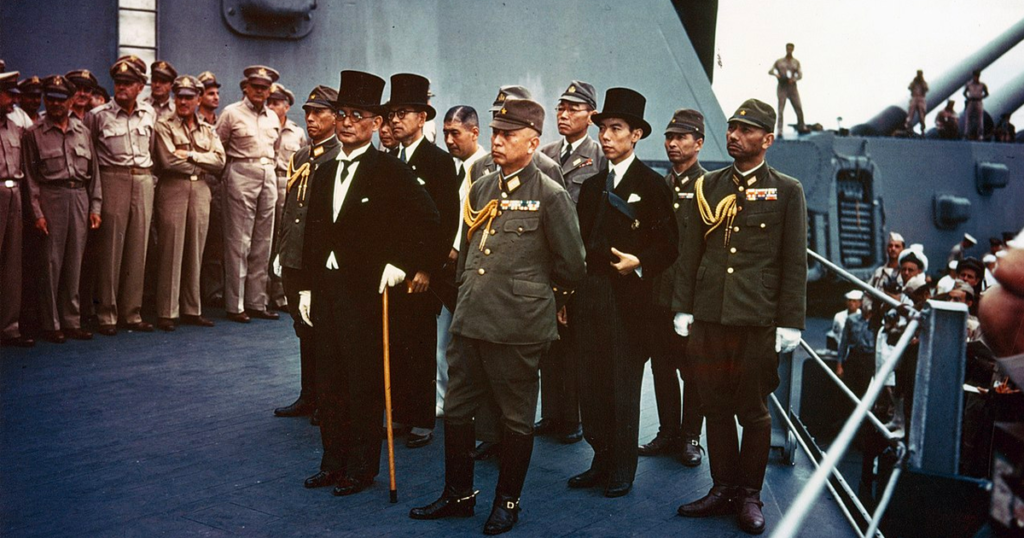
On the 75th anniversary of the end of World War II, it might be appropriate to recall the many factors that contributed to the Allied victory in 1945. Most of these developments are well known, but some are not—especially those important occasions when the Allies simply outsmarted both of the principal Axis countries, Germany and Japan. Herewith, some reminders:
Radar
Britain’s early development of radar proved decisive in the aerial Battle of Britain in the summer of 1940. Channel coast radar stations gave the tactical edge to Royal Air Force fighter pilots scrambling to intercept the incoming Luftwaffe bombers, thus foiling Germany’s first attempt to conquer Britain.
Proximity Fuze
Two years of secret research by thousands of the best scientists and engineers in the United States produced a revolutionary antiaircraft device—the proximity fuze—that astonished and baffled the air forces of Japan and Germany. A shockproof miniature radio transceiver the size of an ice-cream cone mounted in the nose of an AA shell, it made a direct hit on a fast enemy airplane—something very hard to do—unnecessary. With the fuze, a near-miss explosion would easily down the target. German scientists spent years struggling to develop a similar device, but gave up, believing it to be impossible. With it, the United States gained an important edge in the kamikaze attacks in the Pacific and in the Battle of the Bulge in Europe.
British Intelligence
Britain’s MI5 intelligence service proved itself simply more intelligent than its German counterpart, Hitler’s Abwehr. Germany deployed many spies to Britain but every one of them was caught and turned into a double agent. These turncoats spent the rest of the war feeding misleading information back to the Germans. Early on, MI5 chairman J. C. Masterman, an Oxford don, realized that, “we actively ran and controlled the German espionage system in this country”—meaning Britain. Hitler never realized he had been duped.
Broken Codes
Every combatant nation sought to crack enemy codes. The Allies succeeded early and often. Germany and Japan not only failed to break British and American codes, they did not realize that their own codes had been broken. British experts at Bletchley Park first unlocked the Germans’ ENIGMA encoding and, by mid-1942, were reading Germany military communications in real time and passing intelligence to British commanders in the field. One outcome: General Bernard Montgomery’s Eighth Army knew in advance the plans, order of battle, and schedule of General Erwin Rommel’s Afrika Korps attack at El Alamein, Egypt, on August 30—a major secret factor in Montgomery’s legendary victory.
In the Pacific, Japan’s planned follow-up to Pearl Harbor was an ingenious secret assault on Midway Island designed to lure U.S. carriers into an ambush. It was foiled when U.S. Navy code-breakers deciphered the JN-25 code in time to pass those ambush plans to Admiral Chester W. Nimitz’s Fast Carrier Task Force—setting up a surprise U.S. ambush that destroyed four Japanese carriers, some 300 aircraft and their most experienced pilots in the epic Battle of Midway, which began on June 4, 1942.
Fortitude
Britain’s Operation Fortitude was one of the most successful wartime deception campaigns in history, undertaken at the end of 1943 to convince Hitler and the German High Command that the Allied invasion of the European continent would occur at Pas de Calais, not at Normandy. Some 20,000 British operatives staged a phony 150,000-soldier First United States Army Group based in southeast England. It included voluminous phony radio traffic, bogus reports by the many “turned” German agents, inflatable Sherman tanks, and faked Army convoys. It worked. Some 22 divisions of German defenders, including crack Panzer units, were idling at Calais when the Allies’ invasion force caught understrength German defenders flatfooted on the Normandy bluffs at dawn on June 6, 1944. Even better, four weeks after D-Day, Hitler still believed the Normandy landing was a “diversion” and that a second heavier attack would be launched on Calais.
Biggest Strategic Blunders
The largest strategic decisions that Germany and Japan made at the outset of the war were in provoking the United States into getting involved. Japan decided to “neutralize” the U.S. Pacific fleet with a surprise first strike. Ironically the officer who planned the Pearl Harbor attack, Admiral Isoroku Yamamoto, had cautioned against going to war with the United States. He had studied at Harvard, knew our country well, and made his reservations clear: “Anyone who has seen the auto factories in Detroit and the oil fields in Texas knows that Japan lacks the national power for a naval race with America.” Yamamoto forecast a dismal outcome: “In the first six to twelve months of a war with the United States and Great Britain I will run wild and win victory upon victory. But then, if the war continues after that, I have no expectation of success.”
In Germany, at the start of the war in Europe, no one from Hitler on down had an accurate sense of the United States’s potential for waging war. Early in 1941, Hitler made a “reckless promise” to join Japan should it strike America first. Minutes of a meeting in Berlin between Japan’s foreign minister and Hitler showed, according to William L. Shirer’s, The Rise and Fall of the Third Reich (1960), that “the Fuehrer was too ignorant, Goering too arrogant and Ribbentrop too stupid to comprehend the potential military strength of the United States.” Hitler then enthusiastically declared war on the United States on December 11, just four days after Pearl Harbor.


